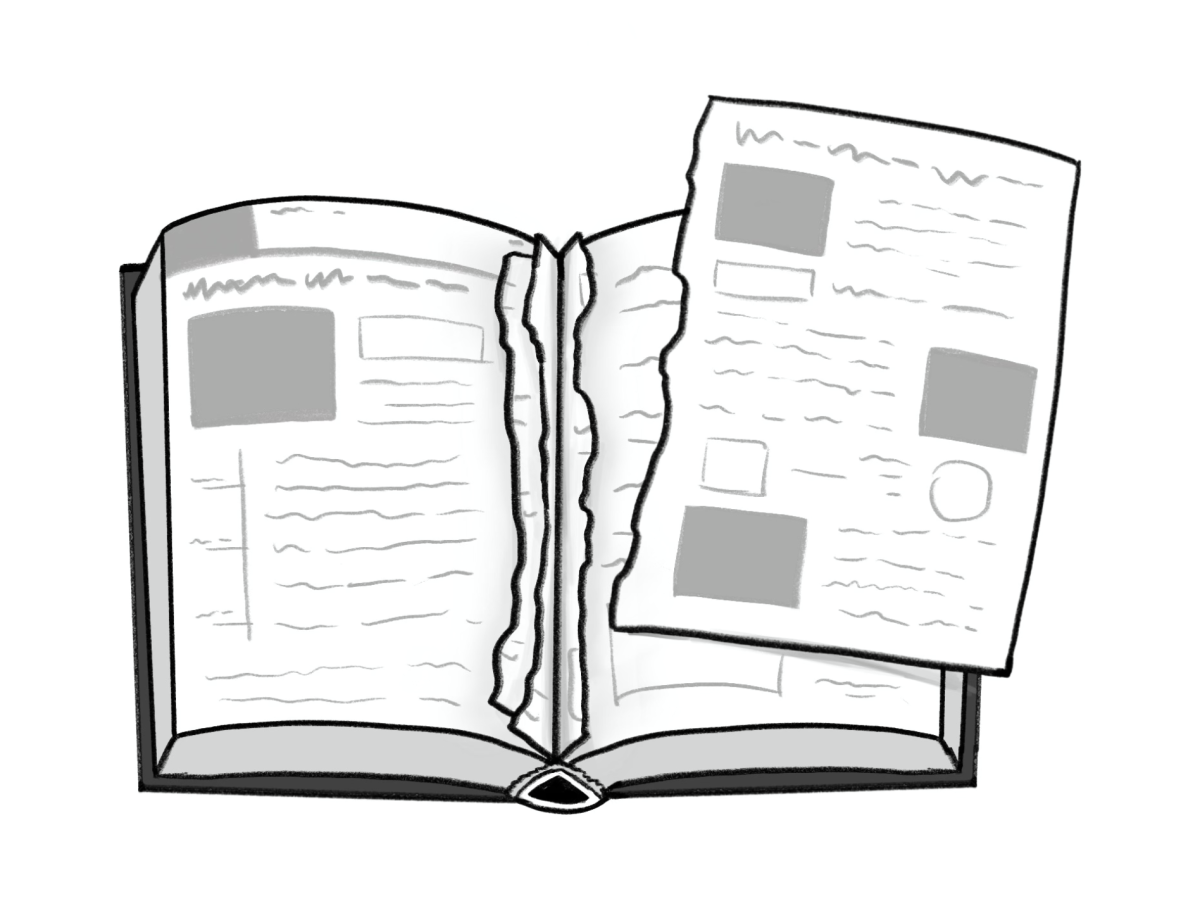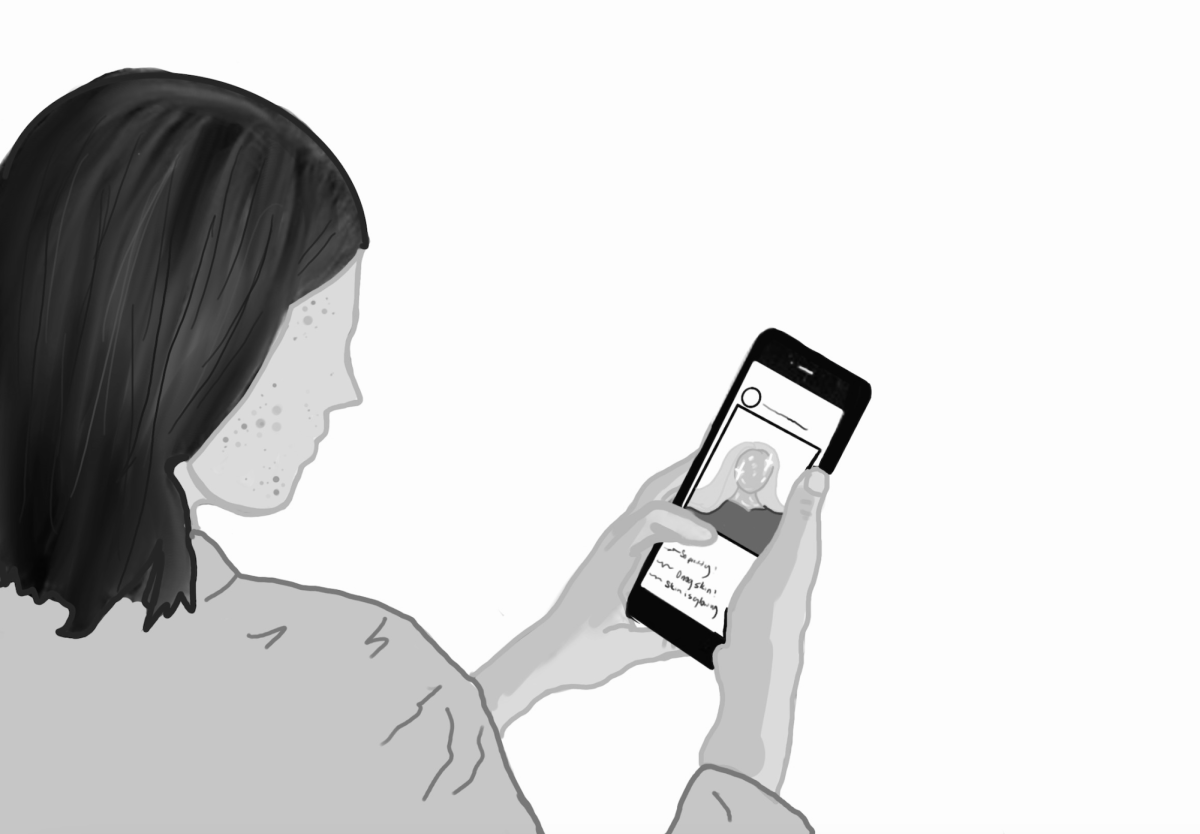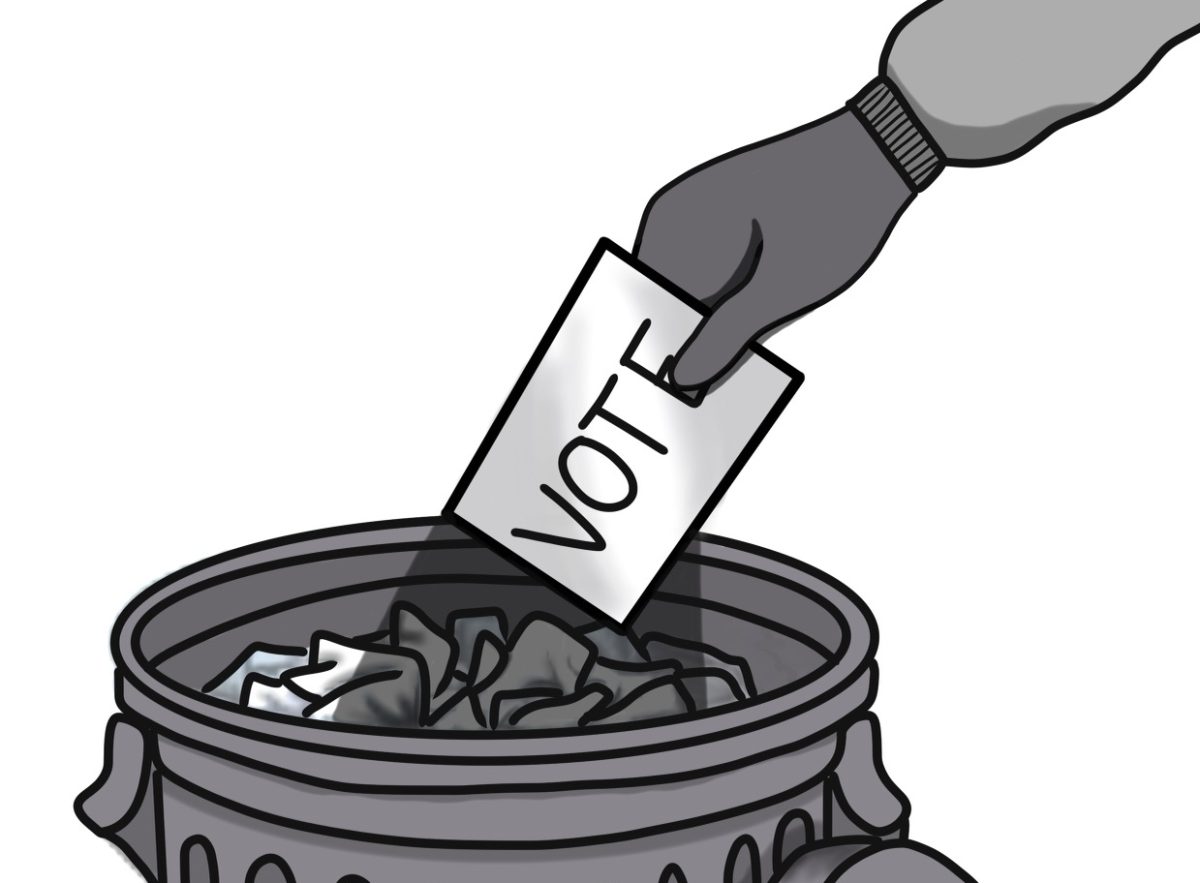With smartphones in our pockets and computers on our desks, it is time to take textbooks off our backs.
We are still lugging textbooks back and forth from school despite negative health consequences. Any commercially available tablet today under two pounds could easily contain all of our current and future textbooks.

Tablets not only store an immense amount of data but, considering licensing fees and total costs of printing and transportation, are a cheaper alternative to the traditional textbook, according to a 2012 Federal Trade Commission study.
The comparison between print and digital “technology” should begin by acknowledging a basic fact: the average tablet contains anywhere from 8 to 64 gigabytes (GB) of storage space. On Amazon’s Kindle Fire, for one example, 1,000 books take up one GB of space. E-textbooks are not only light and compact but always open to wireless updates, additions and corrections. Even more, digital textbook technology is flexible, permitting materials to be tailored to local community and individual preferences. For one thing, this means that special needs students are able to explore new educational tools outside of print.
The versatility and utility of the tablet is not limited to textbooks. Tablet technologies today allow for moving visuals and interactive teaching, something all students can benefit from. Students can take quizzes, watch videos, create graphs, and annotate documents among other things they cannot do with a traditional textbook.
Although Redwood took a step in the right direction by purchasing a few sets of iPads and using them in select classrooms, these iPads only serve as a supplemental device within limited use. According to Joe Stewart, a science teacher in Tam School District’s ITTC iPad program, teachers have to obtain permission from the district to download each individual application. Districts do so to ensure that the content is of a certain standard. There are over 20,000 education applications in the Apple Store alone. While academic oversight is a requirement in any system, this kind of rule seems to slow down the educational process.
School districts like Redwood’s still cling to textbooks as the main preferred “technology,” while things are evolving around them. According to a 2013 PEW Research Center survey of middle school and high school teachers as well as students in grades 9-12, more than four in ten teachers report the use of e-readers (45 percent) and tablet computers (43 percent) in their classrooms or to complete assignments. Why not fully embrace what appears not only to be a superior, less expensive technology, but one which teachers and students actually prefer? For once an opportunity presents itself to use what is not only popular but also makes learning more stimulating.
There are many fears and reservations regarding tablets and e-textbooks, some well-founded. Some of the main concerns center on quality control of applications and the need to control students’ access to social media. These concerns about technological freedom may have simple solutions including limiting internet bandwidth and creating administrator control which can be programmed into approved tablets.
We should be careful, however, of such limitations as they may prove ineffective. Let us not forget that the entire Internet is available through a pocket-size smartphone. Another concern regarding the health effects of screen overuse has merit. While eye strain is a real concern, there are some reader technologies such as the Kindle, for example, which greatly reduce that problem.
Despite these concerns, however, there are many progressive educators on the side of the tablet. The same 2013 survey found that “mobile technology has become central to the learning process,” with 73 percent of Advanced Placement and National Writing Project (NWP) teachers saying that they and/or their students use their cell phones in the classroom or to complete assignments. Teachers also apparently agree that their schools are technologically dated and inadequate. According to the 2013 survey, 15 percent of AP and NWP teachers in high income and 39 percent of teachers in low-income districts say their school is “behind the curve in effectively using digital tools in the learning process.”
The failure to adopt newer digital technology has had a negative effect on teaching methods of both high and low income students. Teachers of all income levels generally agree that students’ lack of access to digital technologies poses a “major challenge,” according to the same survey.
Redwood has already begun to answer the challenge with its pilot iPad program. Any limitations to this program based on cost should take the following into account: tablet prices continue to drop. The average cost of a tablet was $489 in 2011, $386 in 2012, and $300 in 2013, according to IMS research which also projects that the average cost for a tablet will be $263 in 2015. If a bulk price for tablets and e-licenses were negotiated by school systems, the total costs would be even less.
A 2012 Federal Communications Commission (FCC) report stated that K-12 school districts spend more than eight billion dollars per year on textbooks and that e-textbooks can actually save schools between $250-$1,000 per student per year. These savings are no doubt due to reduced textbook licensing costs and the elimination of transportation costs.
In addition, the health costs of old print technology would be reduced. The US Consumer Product Safety Commission found that during the 2011-12 school year more than 13,700 kids, aged five to 18, were treated for backpack-related injuries.
Pediatricians and chiropractors recommend that students carry less than 15 percent of their body weight in a backpack. We know this is not the general practice. The combined average weight of textbooks in history, mathematics, science, and English well exceeds 15 percent at nearly all grade levels. Medical evidence, alone, indicates school systems should quickly move to a more tablet-based education where possible.
Our schools must join in the 21st century and recognize that textbooks are a painfully-outdated technology whose time is quickly passing.


















